Discovered the largest ancient tortoise ever existed on Earth
Stupendemys is a prehistoric genus of ancient freshwater turtles. Its fossils were found in northern South America, in rocks dating from central Miocene until the start of Pliocene, about 13 to 5 million years ago.
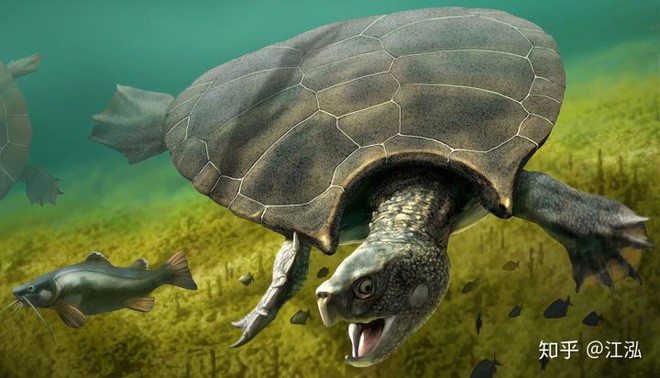
Ground tortoises (Stupendemys geographicus) are the largest known turtles. Based on a tortoise fossils up to 3.3 meters long, the estimated total body length can reach 5 meters (because the neck is also very long) and weighs about 5 tons. Because of the discovery of new fossils, scientists have an opportunity to discover more about this super giant turtle!
The close relative of the ground turtles today is the Podocnemis expansa that lives in South America. Their trunk length is about 75 cm to 1 meter and the average weight is 90 kg.
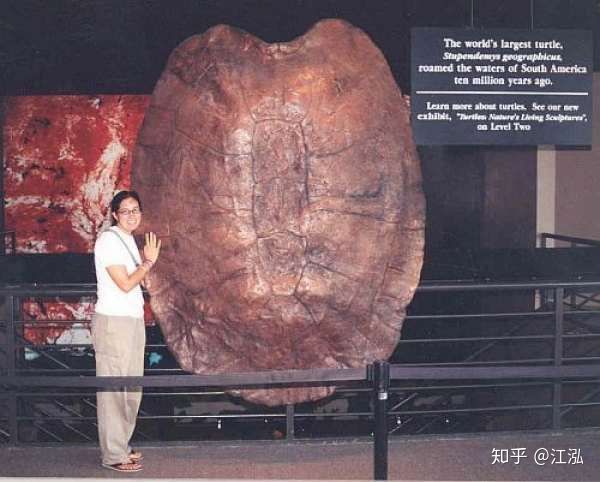
A sample of a terrestrial tortoise fossils (Stupendemys geographicus).
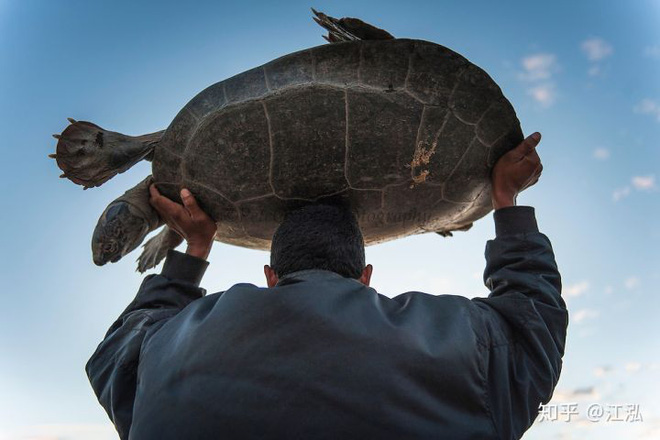
Podocnemis expansa is a species of turtle in the Podocnemididae family. This species was first described by Schweigger in 1812. The tortoise was found in the Amazon basin. Adults are usually 1 meter long. The female has a broad flat shell and is larger in size and more numerous than the male turtle.
Marcelo Sánchez, director of the Institute of Paleontology at the University of Zurich in Switzerland, who has studied new fossils found in Colombia and Venezuela in recent years, said: more than 3 meters long with an estimated weight of 1145 kg, more than 100 times more than Podocnemis expansa ".
According to new studies, over time, the weight of ground turtles has been significantly reduced, but it remains the largest tortoise ever to exist on Earth.
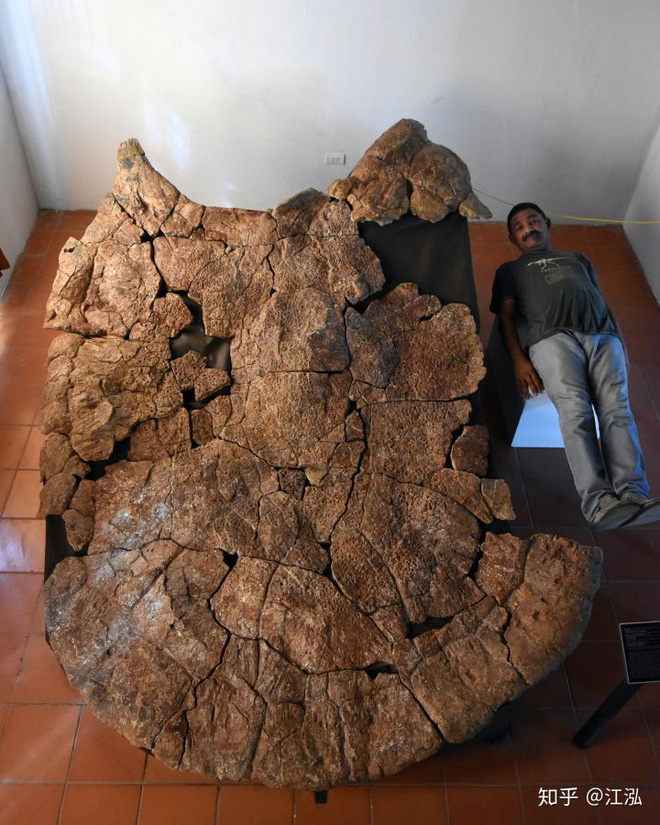
Venezuelan paleontologist Rodolfo Sánchez and a giant ground turtle fossils discovered in Urumac, Venezuela, dated about 8 million years ago.

Compare the size of a giant ground turtle with an adult and today's Podocnemis expansa.
Recently, paleontologists have discovered an almost complete fossil specimen of a land turtle. This fossil shows some features that have not been found before, namely the long horn pair.
Not all the giant terrestrial turtles have these long horns, in fact they only exist in males. This pair of horns does not grow on the head, they grow on the front of the body and the sides of the neck and it is considered a prominent feature of the male tortoise.
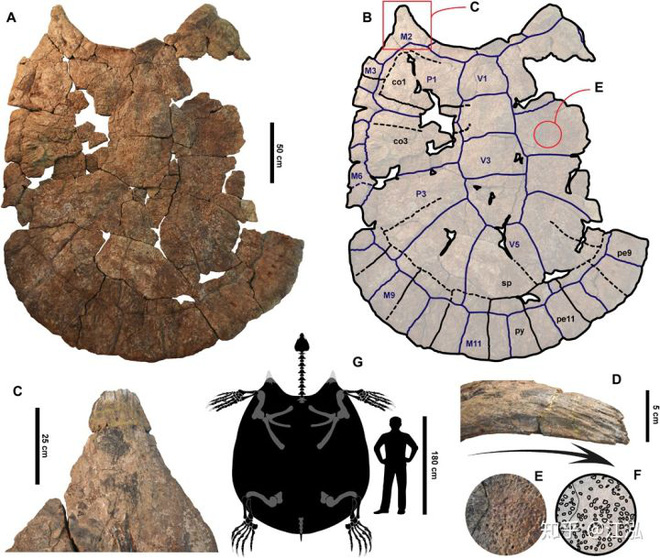
Pair of horns on the shell of a male tortoise.
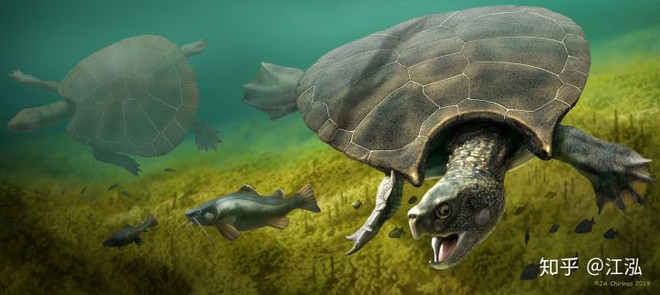
Recreate images of huge terrestrial turtles: male (front) and female (rear left).
Through analysis and speculation, paleontologists believe that the horns on the shells of terrestrial turtles have a defensive function. Although they are huge in size and extremely hard shell, but in the era when they live, this tortoise still has the natural enemies that Purussaurus crocodile.
According to the bites discovered through the fossilized form of the giant terrestrial tortoise, it is clear that they have been attacked by Purussaurus crocodiles, and the force of the bite from the giant crocodile is entirely possible. disrupting the "solid" layer of the Stupendemys geographicus turtle.
This is similar to the way the black Amazon Caiman crocodile killed Podocnemis expansa today.
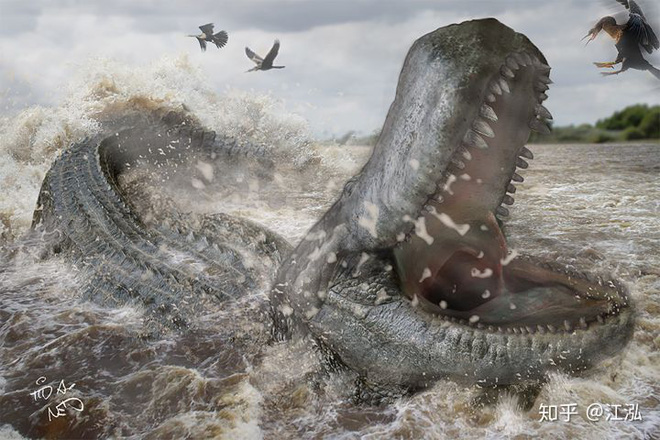
Purussaurus is an extinct genus of giant caiman living in South America during the Miocene era, from Colhuehuapian to Montehermosan in the SALMA classification.

Compare the size of a Purussaurus crocodile to humans.
In addition to discovering turtle shell fossils, archaeologists have also searched for other bone samples that had never been discovered before. Based on the analysis and anatomy of new fossils, paleontologists also identified and proved that this giant tortoise has a relationship with many of today's Amazonian turtles.
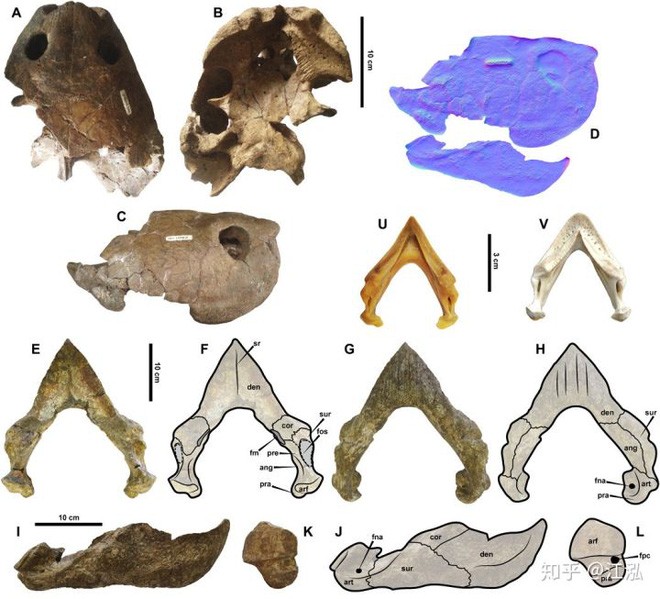
Skull and jaw fossils of giant ground turtle.
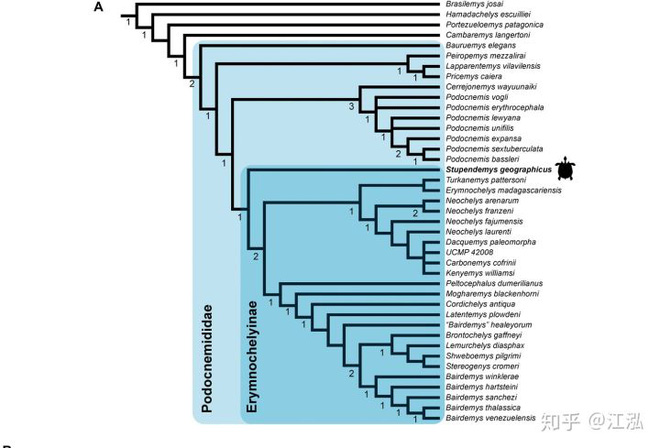
Taxonomic location of giant ground turtle.
The fossils in this analysis come from Brazil, Colombia, Venezuela and other countries. It is found that this area covers almost the entire northern part of South America. The deserted areas today where the giant ground turtle fossils were found were once wetlands and tropical rainforests.
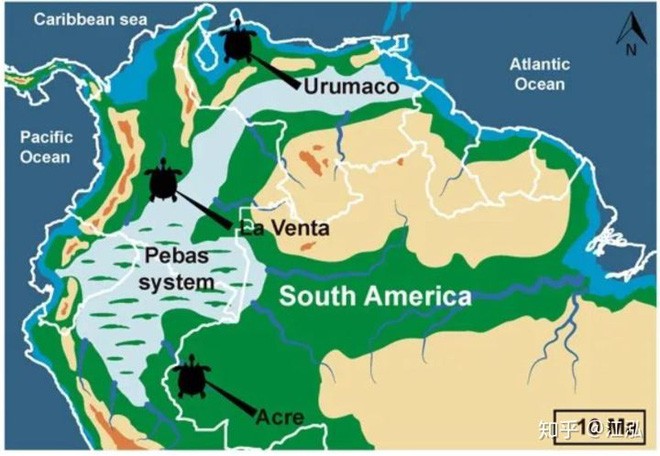
Diagram of the location where fossil turtle found.
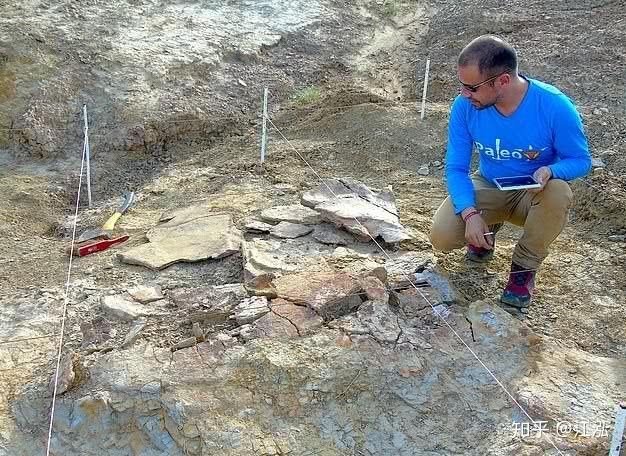
Paleontologist, Professor Edwin Cardina and fossils of terrestrial turtles.
Giant ground turtles lived in the central and northern parts of South America 13 to 5 million years ago. Judging from the geological layers where the fossils were found, these giant turtles often live in ponds and lakes in tropical rainforests or in slow-flowing rivers. They spend most of the time in the water and mostly eat plants. The first fossil of this species was found in the 1970s and named after 1976, it is still considered to be the largest tortoise ever discovered by humans.
You should read it
- 30+ the best shoulder-length hairstyles in 2020
- The corpses suddenly heated up, the mysterious phenomenon without a solution causing the scientists a headache
- Find the gene that is still active after our bodies die
- How to rotate any 1 page size paper in Word
- What is the maximum Ethernet cable length to not lose signal?
- How to increase PIN length in Windows 10/11
- What is body shaming?
- The problems you may encounter if you run a lot
May be interested
- The largest freshwater turtle ever existed with a length of up to 3 meters, a shell weighing over 1 ton
 scientists discovered fossils of giant tortoises that lived in south america 10 million years ago.
scientists discovered fossils of giant tortoises that lived in south america 10 million years ago. - Ancient ancient embankment found in Aswan, Egypt
 a strange archaeological system was discovered long ago, leading to the ancient tomb of the merchant sarenput i who was making the middle eastern scientists care.
a strange archaeological system was discovered long ago, leading to the ancient tomb of the merchant sarenput i who was making the middle eastern scientists care. - The 'eccentricities' are only found in ancient Egypt
 until now, researchers have discovered a number of mysteries about humans, ancient egyptian customs such as golden skincare, cat worship, using giraffes as gifts to show strength. ..
until now, researchers have discovered a number of mysteries about humans, ancient egyptian customs such as golden skincare, cat worship, using giraffes as gifts to show strength. .. - China's largest hydroelectric dam has slowed down the Earth
 the displacement of 42 billion tons of water to 175 meters above sea level in the tam hiep hydropower dam is enough to slow the rotation of the planet, though the impact will be extremely small.
the displacement of 42 billion tons of water to 175 meters above sea level in the tam hiep hydropower dam is enough to slow the rotation of the planet, though the impact will be extremely small. - Mycenean-era tombs with dozens of evidence were discovered in Salamina
 a mycenean tomb with ancient goods dating back to the 12-13th century bc was discovered in the center of the main town on salamina island, greece, discovered by chance in a home-link construction project. stay with central sewage network.
a mycenean tomb with ancient goods dating back to the 12-13th century bc was discovered in the center of the main town on salamina island, greece, discovered by chance in a home-link construction project. stay with central sewage network. - Archeology Israel explores ancient Roman history at the Mediterranean port
 archaeologists in israel working in a roman port city in the mediterranean discovered relics of the sanctuary for augustus caesar and a pearl that existed for centuries inscribed with menorah.
archaeologists in israel working in a roman port city in the mediterranean discovered relics of the sanctuary for augustus caesar and a pearl that existed for centuries inscribed with menorah. - Google Earth takes tourists to visit ancient Rome
 netizens can now 'travel on site' for free to visit ancient rome, via google earth's 3-dimensional mapping software.
netizens can now 'travel on site' for free to visit ancient rome, via google earth's 3-dimensional mapping software. - The end of the Earth actually happened about 250 million years ago
 known as the permian-triassic mass extinction event – or the great extinction – it was the largest recorded catastrophe in our planet's past 539 million years.
known as the permian-triassic mass extinction event – or the great extinction – it was the largest recorded catastrophe in our planet's past 539 million years. - 4 important astronomical discoveries of the ancient Greeks
 astronomy is one of the oldest sciences on earth, grounded by ancient civilizations, in particular the greek civilization, with countless personal contributions. network in the history of human development in general.
astronomy is one of the oldest sciences on earth, grounded by ancient civilizations, in particular the greek civilization, with countless personal contributions. network in the history of human development in general. - The new hypothesis about Snowball Earth and how the earth freezes hundreds of millions of years ago
 researchers at harvard university have changed the way we think about the largest ice age event on earth, snowball earth. this video will show you how the earth froze according to this hypothesis.
researchers at harvard university have changed the way we think about the largest ice age event on earth, snowball earth. this video will show you how the earth froze according to this hypothesis.










 Gorgeous fluorescent stone under ultraviolet rays
Gorgeous fluorescent stone under ultraviolet rays How do whales survive and breastfeed in the ocean?
How do whales survive and breastfeed in the ocean? Meaning of parameters on battery
Meaning of parameters on battery This is how humans can build life from nothing on Mars
This is how humans can build life from nothing on Mars Theoretically, hairless moles can be immortal
Theoretically, hairless moles can be immortal